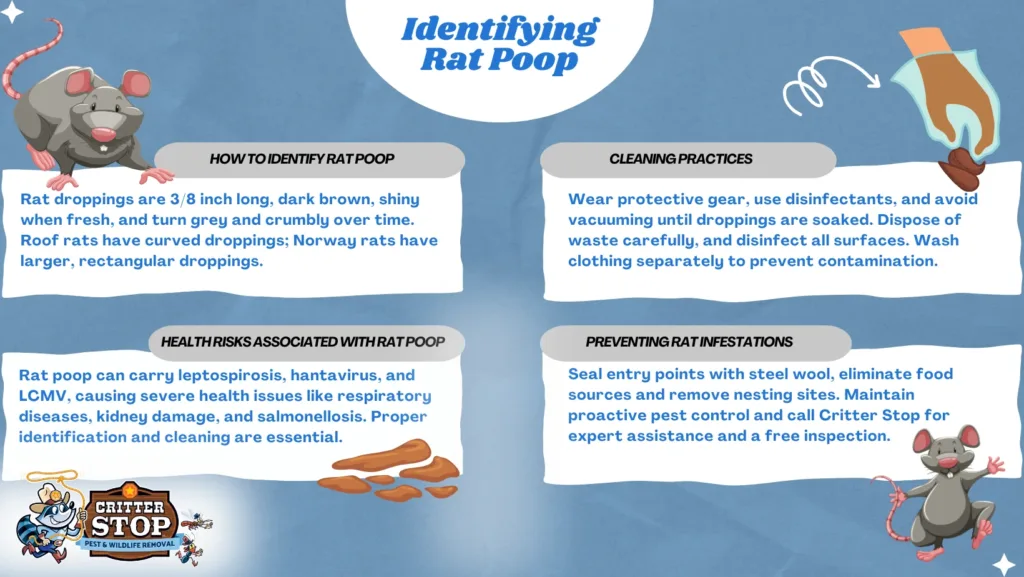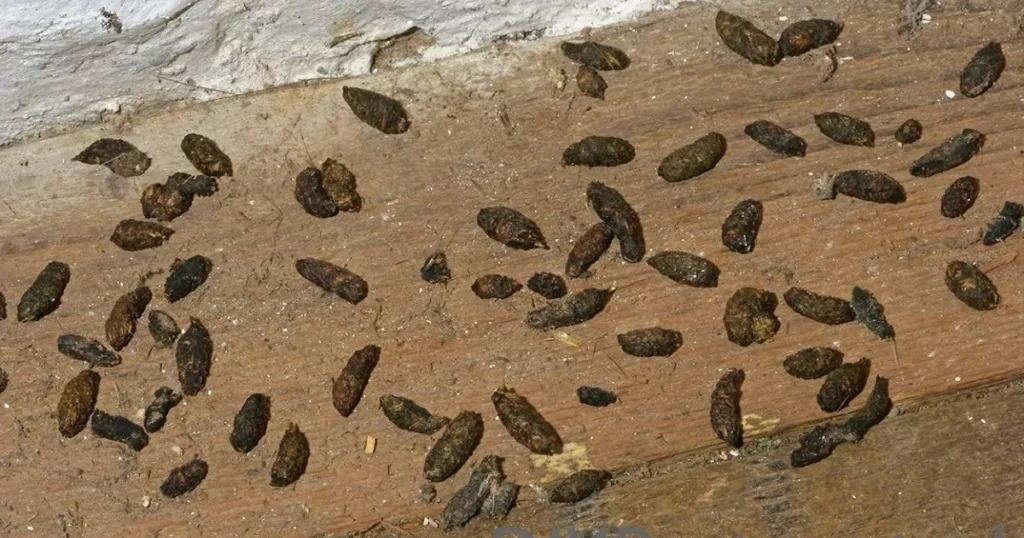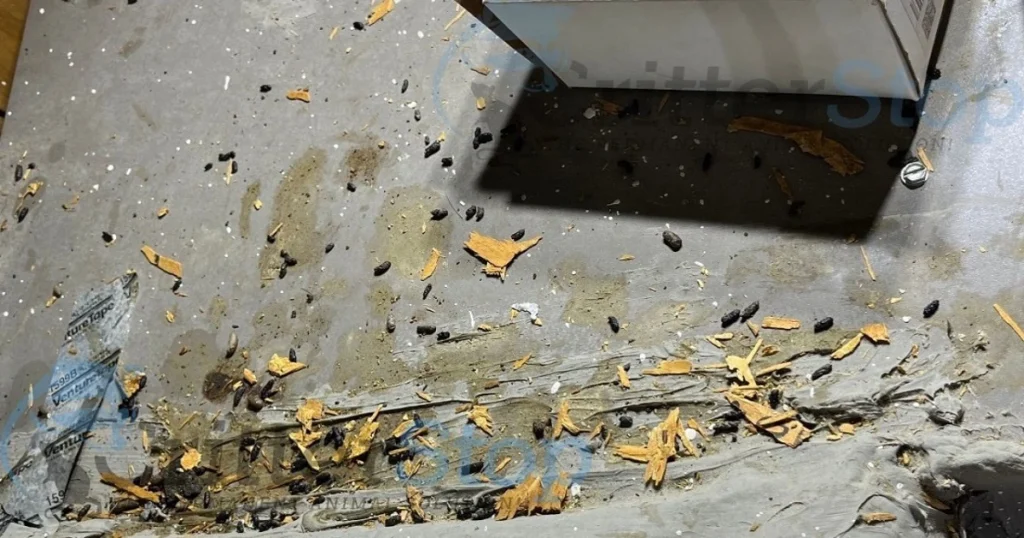
If you’re googling “rat poop pictures” at 11:47 p.m., there’s a good chance something small and unwelcome just left you a clue. The good news: droppings are one of the easiest, earliest ways to confirm rodent activity—often before you ever see the animal. Below you’ll find a practical, image-driven guide to what rat poop looks like, how to tell it from mice or squirrels, what “fresh vs. old” looks like in photos, and how to clean it safely. This blends homeowner reality with wildlife inspection experience and IPM (Integrated Pest Management) best practices—so you can move from “is that what I think it is?” to a smart plan.

When you snap or study rat poop pictures, look for four simple cues:
1) Size & shape
2) The tips
3) Color & surface
4) Pattern on the ground
Photo tip: Place a coin or tape next to the droppings for scale, shoot from top and side, and include one context shot (e.g., “under sink, right of dishwasher”). That’s what the pros do.
Neither ID is perfect from one pellet; location + quantity + size together paint the best picture.

Your camera can clue you into infestation activity:
A mix of fresh and old means ongoing activity along the same route. That’s your signal to act now, not “sometime this spring.”
| Feature | Rat Droppings | Mouse Droppings | Squirrel Droppings |
| Length | ~½–¾ in (12–19 mm) | ~⅛–¼ in (3–6 mm) | ~⅜ in (9–10 mm) |
| Shape | Capsule/cigar, stout | Spindle/rice-like | Thicker middle; rounded or tapered ends |
| Ends | Blunt (Norway) or pointier (Roof) | Pointed at both ends | Rounded or slightly tapered |
| Pattern | Clusters along edges/runways | Scattered more randomly | Often near food sources/outdoors |
| White tip (urate)? | No | No | No (reptiles have white tips) |
If your “rat poop picture” looks tiny and needle-pointed, you’re likely staring at mouse.
Rodent droppings can carry pathogens. With rats, the headline risks include:
Safe cleanup (IPM-aligned)
If droppings are extensive (attics, HVAC areas, insulation), call a licensed remediation or wildlife professional. It’s not overcautious; it’s how you avoid turning a mess into a health problem.
Droppings are not the problem—they’re the symptom. Remove the motivation and the “new pictures” stop.
Fixes that actually work (and last):
Poisons/rodenticides can create secondary risks for pets and wildlife; save those conversations for a licensed pro and focus first on exclusion + sanitation.

Those five choices turn your phone into a forensic tool—and speed up any professional’s assessment.
A good firm will identify entry points, design exclusion, and set a humane, targeted control plan—then show you how to keep it that way. For more detailed information and professional wildlife removal services, contact Critter Stop at (214) 234-2616 for a free inspection. Our expert team is here to help you keep your property safe and pest-free.

1) Are rat droppings always black in photos?
Fresh droppings look dark brown to black and slightly shiny. As they age, they fade gray and look chalky/dusty. Lighting matters—use natural light or a diffused flashlight to avoid color washout.
2) Can I tell species from one pellet?
You can lean Roof vs. Norway (pointier/curved vs. blunter/thicker), but don’t hang everything on a single pellet. Location, quantity, and other signs (gnaw marks, nesting material, runways) round out the ID.
3) Is it safe to vacuum droppings with a shop-vac?
Not dry. Misting/disinfecting first is essential to prevent aerosolizing contaminated dust. For large cleanups, a HEPA vac with proper PPE or professional remediation is the safer route.
Your rat poop pictures are more than gross—they’re data. Size, tips, sheen, and setting reveal who, how recently, and where to start. Clean safely, seal entry points, remove the buffet, and use traps strategically. Do those well, and your camera roll will go back to kids, pets, and sunsets—instead of pellets.
Rat poop is larger, about 1/2 to 3/4 inch long with blunt ends, while mouse poop is smaller, about 1/8 to 1/4 inch long with pointed ends. Comparison pictures on Critter Stop’s website can help you distinguish between the two types of droppings. For more detailed information and professional wildlife removal services, contact Critter Stop at (214) 234-2616 for a free inspection. Our expert team is here to help you keep your property safe and pest-free.
Visit our Critter Library and learn more about our furry friends